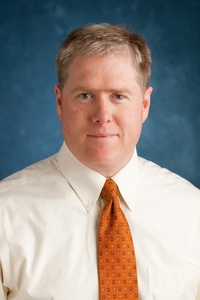University of Michigan scientist to Senate panel: Human embryonic stem cell research must continue
University of Michigan research scientist Jack Mosher has spent most of the last decade looking for ways to cure an uncomfortable and potentially deadly gut ailment called Hirschsprung disease.
But because of lobbyists who know little about actual science, U-M scientist Sean Morrison told a Senate panel, Mosher might have to abandon his work and his career.
"I interact regularly with hundreds of leading stem cell scientists from all over the world, and virtually all of them believe that research must continue with all types of stem cells."
Morrison, the director of the University of Michigan's Center for Stem Cell Biology, told the panel that congressional action is necessary to clear the murky human embryonic stem cell battle being fought in the courts.
The congressional hearing was scheduled in the wake of a federal judge’s ruling last month that stopped the flow of federal dollars to the research.
Judge Royce Lamberth argued human embryonic stem cell research violates an existing law against the federally funded destruction of human embryos. A temporary stay since Lamberth’s ruling has allowed research to continue while an appeals panel considers it, but the future of the researcher is not on solid ground.
These kinds of ups and downs should end, Morrison told the Senate Appropriations Subcommittee on Labor, Health and Human Services and Education.
Like much of the work by scientists using human embryonic stem cells, Mosher’s project has suffered from repeated delays.
Federal funding for all types of stem cell research should continue, Morrison said.

Sean Morrison, who directs the University of Michigan Center for Stem Cell Biology, testified before a Senate panel Thursday.
Photo provided by the University of Michigan
“American science is the envy of the world because it’s a meritocracy in which there’s fierce competition to fund the best ideas,” he said.
Sen. Tom Harkin (D-Iowa), chairman of the Senate Appropriations Subcommittee on Labor, Health and Human Services and Education, agreed.
“We’ve come to far to give up now. If we don’t win this battle in the courts we’ll have to take it up in the Congress. This research must continue.”
Also at the hearing, Francis Collins, the director of the National Institutes of Health, gave an educational presentation on three types of stem cells being used in research. Those include:
• Human embryonic stem cells, which are able to divide in perpetuity (pluripotent) and can change into any cell type in the human body.
• Adult stem cells, which have been studied for 50 years and yielded advancements like the bone marrow transplant, but do not divide indefinitely (multipotent) and cannot change into other cell types.
• Induced pluripotent stem cells are adult stem cells that have been genetically reprogrammed to act like human embryonic stem cells. But there are still subtle differences. “Whether this will matter for clinical applications is not yet clear,” Collins said.
Asked about the results of $500 million in federal funding that has flowed into human embryonic stem cells thus far, Collins said human trials have begun in California to explore human embryonic stem cells’ regenerative potential in spinal-cord industries. Human trials for human embryonic stem cells research for type 1 diabetes and eye disease are in the not-too-distant future. Scientists also now have the ability to drug screen human muscle cells rather than use human subjects for the trials, because they have developed the ability to make human muscle cells.
At the center of the debate for some is the destruction of human embryos that occurs when stem cells are culled from them. Scientists point out that the embryos are unused and from fertility clinics; there are about 400,000 frozen human embryos nationwide at these clinics, Morrison said.
Some lawmakers who spoke were unmoved by the scientific potential.
“The distinction is whether or not the federal government should be subsidizing controversial, life-altering research with federal dollars,” said Sen. Roger Wicker (R-Miss.). “We are unable to afford all the research we would like to do.”
Collins, a scientist who wrote “The Language of God,” is a man of faith, Harkin pointed out. Harkin asked him how he reconciles his faith with his science. Collins noted couples seeking in vitro fertilization created hundreds of thousands of frozen embryos, which will likely be discarded from fertility clinics.
“These embryonic stem cells exist and will continue to exist so long as in vitro fertilization goes forward. Putting the reality test here, I believe most people who look carefully at the issues, whether from a faith or a humanistic perspective, come up with the conclusion that what is potential here justifies what we are talking about in terms of federal funding for human embryonic stem cell research. “
Watch a recording of the webcast here.
Juliana Keeping is a health and environment reporter for AnnArbor.com. Reach her at julianakeeping@annarbor.com or 734-623-2528. Follow Juliana Keeping on Twitter

